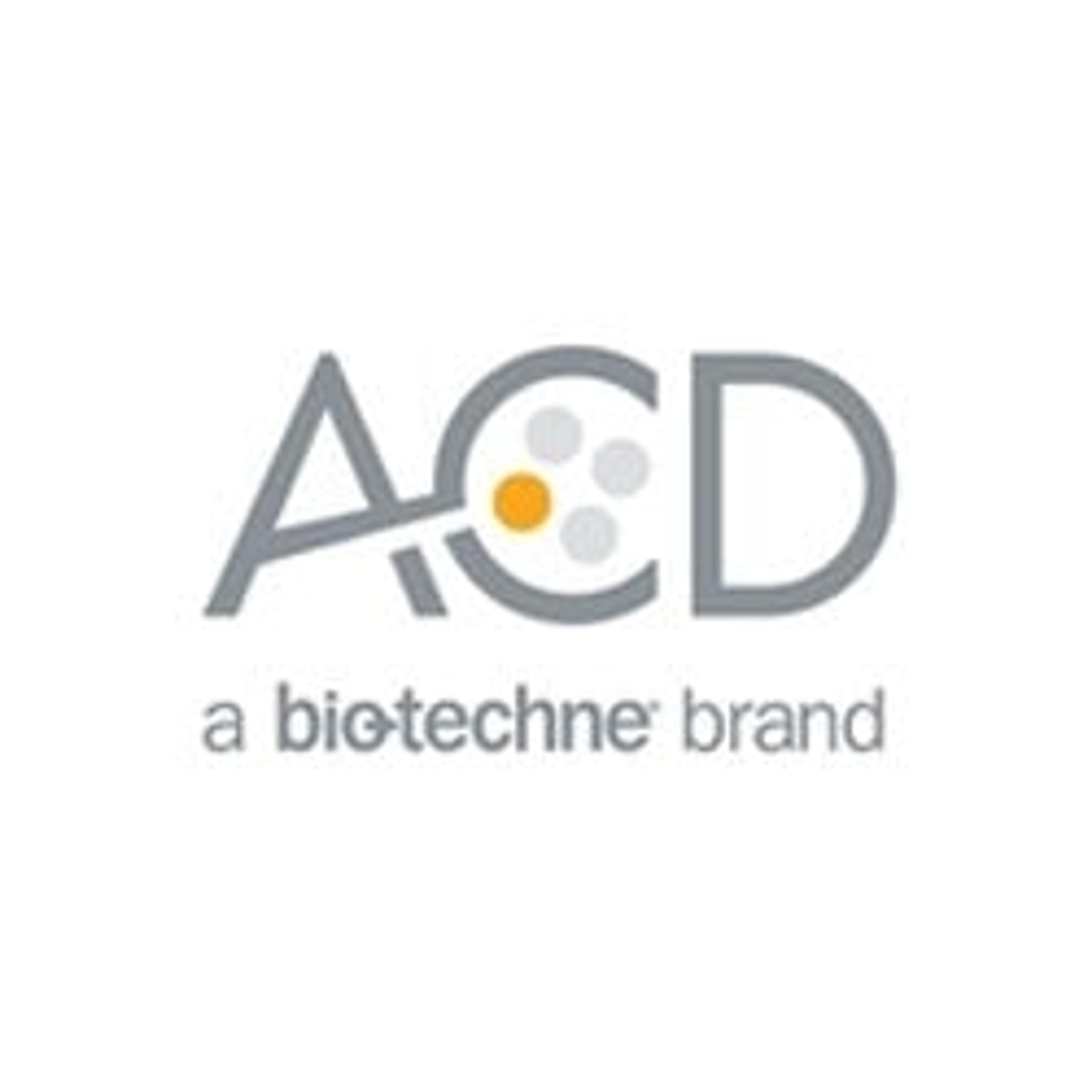Establishing the etiology and pathogenesis of viral disease with RNAscope
Don’t miss this on-demand webinar exploring how RNAscope technology can be used to detect viral infection and pathogenesis
15 Jun 2020

Direct detection of viral RNA in human or other animal cells by RNA in situ hybridization (ISH) is a powerful tool to establish the etiology and pathogenesis of viral disease.
Nucleic acid-based molecular detection methods have revolutionized viral detection, offering several essential advantages such as sensitivity, specificity and speed. Beyond this, RNAscope ISH uniquely offers molecular detection coupled with morphological context to enable visualization of the virus in different infected tissues and cell types.
In this webinar, Jyoti Phatak-Sheldon demonstrates how RNAscope can be used to detect viral infection and pathogenesis, and enhance our understanding of globally important viruses, such as SARS-CoV-2.
Think you could benefit from this webinar, but missed it? You can now watch it on demand at a time that suits you and find highlights from the live Q&A session below>>
Watch on DemandQ: Is the COVID-19 probe specific to SARS-CoV-2, or can it detect other SARS species?
JS: The COVID-19 probe has been specifically designed for the SARS-CoV-2 virus that had the outbreak in Wuhan, China in 2019. It specifically detects the S-protein of that virus. Therefore, it will not detect other SARS species, but we do have probes that will allow for the detection of the other SARS species that have been previously studied.
Q: How many targets can be tested in a single sample in either the chromogenic or fluorescent format?
JS: For the chromogenic format, we can detect either a single-plex format or a duplex format. For the fluorescent assay, you can test up to four targets using our multiplex v1 or v2 format. However, if you have access to fixed frozen or fresh frozen tissue, then you can also detect up to 12 targets on the same tissue section using our high-flux assay. You can also find a lot of these additional details on the product page on our website.
Q: Do you have any data or papers that have used RNAscope for COVID-19 viral detection in human samples?
JS: We currently have several published papers on this, and are currently in preprint in the bioRxiv. An important paper for detection in human samples is one regarding kidney samples by Arkana Labs. In this paper, they have tested out the SARS-CoV-2 probe in kidney biopsy tissues. We also have some researchers that are testing this probe out in human liver samples.
In addition, there are two other papers that have recently been published. One of these tested the SARS-CoV-2 probe in cell lines that were positive for the virus. The other tested the probe in three non-human primate species. Details on all of these papers are available on our website under the COVID-19 page. So, if you would like to take a look at any of them, feel free to look at the webpage and view the papers through the given links.
Q: In the COVID-19 offering, there was information on performing in situ hybridization (ISH) and immunohistochemistry (IHC) together. Could you go into a bit more detail on this?
JS: You can use RNAscope technology along with IHC or IF. The way the protocol works is you perform the IHC or the IF after doing your RNAscope assay. Our support team can help you determine how the antibody will work or highlight the pretreatment conditions that will need to be optimized for running the antibody.
Another recommendation, especially for the COVID-19 virus probe that we've made, is to test the viral probe using the RNAscope assay, along with the antibody for the receptors. These receptors include the ACE-2 or TMPRS.
Those are just some of the recommendations that we've made, but of course, you can always add your antibody of choice using the RNAscope ISH probe.
Q: What tissue types can be used for viral detection using the RNAscope assay?
JS: Depending on the different formats (either chromogenic or fluorescent) and the different product types, you can either use FFPE, fixed frozen, or fresh frozen tissue samples. We have also done some work where people have used cell lines or cell pellets. So, it really depends on the platform that you're using.
Q: Do you have probes available to study pathogenesis models in different species?
JS: Yes, definitely. The probes are not just restricted to the actual viral gene. You can also design probes for detecting various stages of the pathogenesis. Along with the SARS-CoV-2 probe, you can also add probes for IL-6 or other cytokine factors that are released in response to the infection. That way you can really see the entire breadth of how the infection affects the host tissue. You can also use the negative-sense strand probe that will allow you to detect the viral replicating site on the tissue that you are testing.
Q: What are the pros and cons of using RNAscope in the detection of viral infections like COVID over techniques such as qPCR?
JS: To clarify, qPCR is a completely different platform than RNAscope and serves a different purpose. qPCR is a faster detection method for things like diagnostic tests. The RNAscope ISH assay is very specific for tissue-based detection. So, if you want to look at your target on the tissue, understand how the virus is causing the infection, and look at the spatial context, that's where the RNAscope ISH comes in.
We've also published a number of papers where customers have performed qPCR and then confirmed their qPCR findings on a tissue context using the RNAscope assay for their target of interest. They are complementary to each other in a lot of ways.
Q: Does fixation and permeabilization affect the detection efficiency of this technique?
JS: We do recommend some protocols for fixation and permeabilization, but if you already have samples that have been fixed, our protocol does ask you to test out controls just to make sure the RNA quality in your FFPE sample is good. If the controls come back great, then you can go ahead and proceed with running the assay.
Q: Could you clarify what the exact meaning of RNAscope ISH is?
JS: In a nutshell, RNAscope in situ hybridization (ISH) assay is a method to use if you have a target of interest that you want to look at on a tissue sample. You can ask us to design a probe for that target of interest. This probe will hybridize to the target on whatever tissue type you're using. Our patented signal amplification technology will allow you to visualize those targets as a single dot, so you're looking at your data at a single-cell resolution. This is an in situ hybridization assay, a tissue-based assay, allowing you to visualize dots with high sensitivity and high specificity at a single-cell resolution.
Q: How is the sequence on double Z target probes determined?
JS: The double Z target probes will hybridize your target of interest. This is determined by you and you provide the sequence to our probe design team. They will run their algorithm to make sure to test for the feasibility of the probe, e.g. to check for variable factors like cross detection. Then the probe is designed. Our standard probe is a 20ZZ probe. You don't need all the 20ZZs to bind to your target, for the signal amplification to happen
Q: What is the sensitivity and specificity?
JS: The probe needs to bind to both the Zs as this is what is really allowing you to improve your specificity. Just binding to one of the Zs will not allow for that amplification tree to be built out. This binding allows increased specificity and the use of multiple amplifiers and preamplifiers allows for an increased signal and allows you to gain better sensitivity of the assay.
Q: What is the turnaround time for results?
JS: The turnaround time for a manual chromogenic assay is usually about eight hours. There are multiple stopping points that you can use. If you are using the fluorescent version of the assay, the time really varies for example, the fluorescent v1 assay can take as little as six hours.
The automated assays we have can be performed on both the Ventana and Leica platforms, these take about 12 hours.
Q: Are there probes for enteric viruses as well?
JS: Yes, we have probes for all viruses. The data in this presentation was shown with the current pandemic in mind, but you can design probes for any virus species out there. As long as you know the sequence, we can design a probe for you.
Q: Can two types of RNAscope be used simultaneously to detect patients that may have been infected with both COVID-19 and influenza virus at the same time?
JS: Yes, you can definitely detect two different viral species on the same tissue sample. You could use either the Duplex Assay or you can perform the Multiplex Fluorescent Assay. In terms of detecting similar types of species, you will have to look at the homogeneity of the sequence and consult with our probe design team. However, as long as the two sequences have a good amount of difference, you can detect both of those probes on the same tissue context.
Q: Which tissue specimens are preferred for in situ hybridization and are there any special fixation requirements?
JS: We have a standard format for FFPE, fresh frozen, and fixed frozen samples. For fixation, we do provide recommendations in our protocols on how to do those. When you purchase the assay, our support team will help you out with the process. If you already have samples that have been fixed in the past, you can also run the controls to check the RNA quality in your sample and decide if the sample is good enough to be tested or not.
Q: What is the difference in the application of negative-sense and positive-sense RNAscope?
JS: The positive-sense RNAscope probe is the one that will allow you to detect the actual viral gene, while the negative-sense probe will allow you to visualize the viral replicating strand, so you can identify if the virus is present or not. You can also see where the replicating site is. This is somewhere where ISH is really helpful because it will allow you to get all that data on the morphological space, whilst confirming and validating the presence of the infection or not.
Q: Is the RNAscope available in kit form?
JS: Yes, the RNAscope is available in a kit form. In the kit you get the reagents, the buffers, and the probes that are required to perform the protocol. There are some materials that you will need to purchase on your own, depending on what assay you're performing. You will also need your scanners, your microscopes, and the protocol also requires you to have a hybridization oven. This is something that can be purchased from ACD.
Q: Can this kit differentiate between a very virulent COVID-19 and a less virulent strain?
JS: I would believe the virulency would depend on the level of gene expression. So, yes, if you are looking at it on a morphological context, you will be able to determine the level of the SARS-CoV-2 gene expression in your tissue. Additionally, this is a semi-quantitative assay, so you can count the number of dots that are represented by the amount of virus that is present in the sample. So, you can quantify and determine based on that.
Q: How should we store the RNAscope?
JS: The RNAscope kit has multiple reagents in it. So, each reagent will have its own specification for storage and when you purchase the kit you will get all those recommendations with it. You can always contact our support team to find out what is the ideal storage for each of those reagents received.
Register to watch the full webinar>>
SelectScience runs 3-4 webinars a month across various scientific topics, discover more of our upcoming webinars>>


